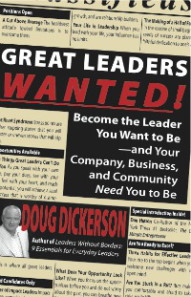
Am I failing different each time? – David Kelley
In his book, “The Power of Optimism”, Alan Loy McGinnis wrote of the great fire Thomas Edison experienced at his lab. Edison’s manufacturing facilities were heavily damaged by fire one night in December, 1914. Edison lost almost $1 million worth of equipment and the record of much of his work. The next morning, walking about the charred embers of his hopes and dreams, the 67-year old inventor said, “There is value in disaster. All our mistakes are burned up. Now we can start anew.”
Edison’s attitude in the face of his disaster serves as a reminder and as encouragement to those who have ever experienced a setback or failure. As a leader the question is not whether you will have failures, but when you do, how will you respond? As you grow as a leader the types of failures and the way you fail will grow with you. Are you getting better? Here’s how you can tell.
You fail better when you are not afraid to take risks
Taking risks is part of your growth as a leader. Without risks you are in a rut and the view will never change. It’s as you dare to venture out and try new things that you can maximize your potential and reach new goals. Failures will come when you take risks but anything worth having will require it.
You fail better when your dreams are big
This is where you put your risks into action. Failure in pursuit of a big dream is much better feeling than the feeling of complacency where you are. You have big dreams for a reason. And big dreams require action. And along the way of fulfilling those dreams you will experience setbacks. Failure is a part of your growth and through every difficulty along the way you are one step closer to seeing your dream fulfilled.
You fail better when you do your very best
Big dreams and goals require more out of you than what you gave a year ago or five years ago. It’s the payoff of your growth and the reward of your hard work. A failure at this stage in your life is still many steps ahead of where you were in the past. Each step, each setback, and every failure is the result of putting your best foot forward even if you stumble.
You fail better when you fail with others
Your path to success as a leader will be easier to navigate when you have others to share it with. Smart leaders understand the power of teamwork and the rewards of collaborative effort. You can enhance and accelerate your work, dreams, goals and aspirations when others are involved. Setbacks and failures hurt less when shared by others and your recovery will be quicker. There’s nothing like sharing a few failures with your team and there’s nothing like the celebration at the end when together you achieve your goals.
You fail better when you don’t give up
Churchill said, “Success is not final, failure is not fatal: it is the courage to continue that counts.” When failures come your way don’t give up. Failing successfully happens when you get up, dust yourself off, reassess, and get moving. You wouldn’t be where you are today if deep down you didn’t already know this. But perhaps you just need the reminder so here it is; don’t give up!
You fail better when you show others how
There is no failure or setback that you go through that is in vain if you react the right way, learn from it, and care enough to help others. Your life lessons – all of the bumps and bruises along the way can serve as invaluable teaching moments. The way you fail today is not the way you failed five years ago and it will not be the way you will fail five years from now.
The way you fail is important. As you come through your failures you are learning, applying new lessons, being more creative, and making wiser decisions. What you learn you should share. Show others that failure is not fatal, that there is triumph in adversity, and most of all it is worth it if you don’t give up.
What do you say?
© 2014 Doug Dickerson
I welcome your feedback:
1. Does failure look different to you now as compared to five or ten years ago?
2. What additional advice would you give to aspiring leaders who have experienced failure or a setback?
3. What life lessons have you learned though failure?
Please follow and like us:










